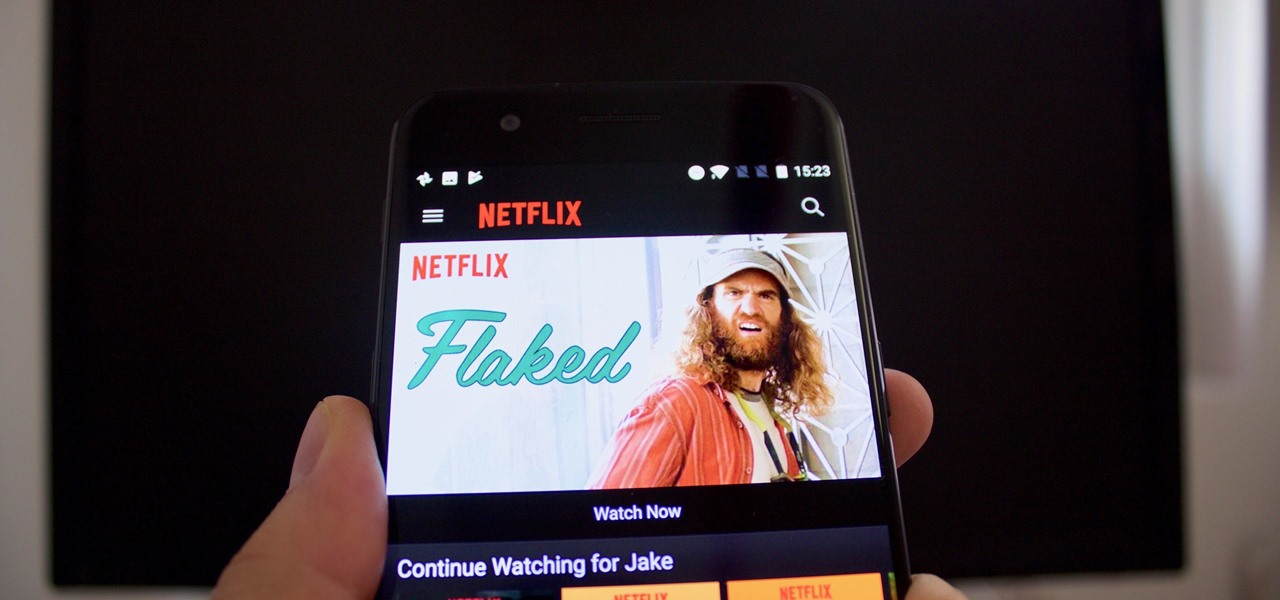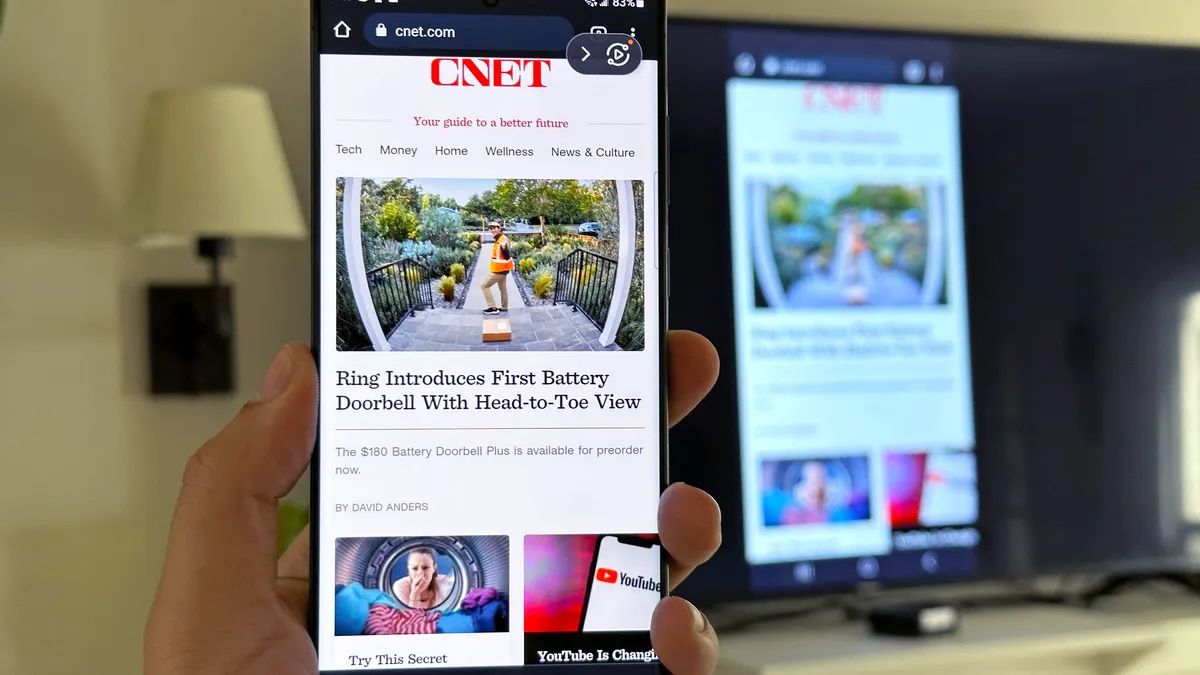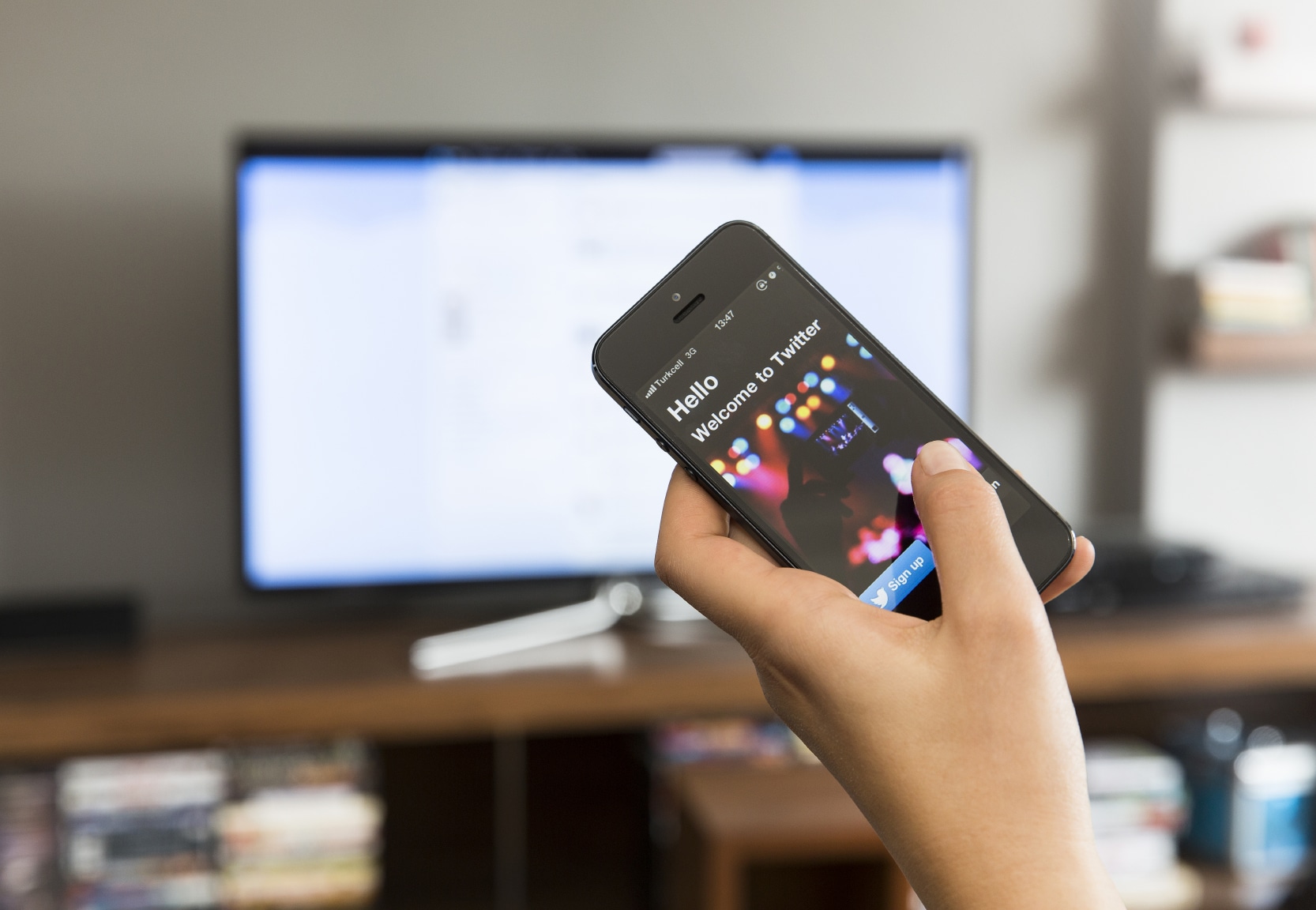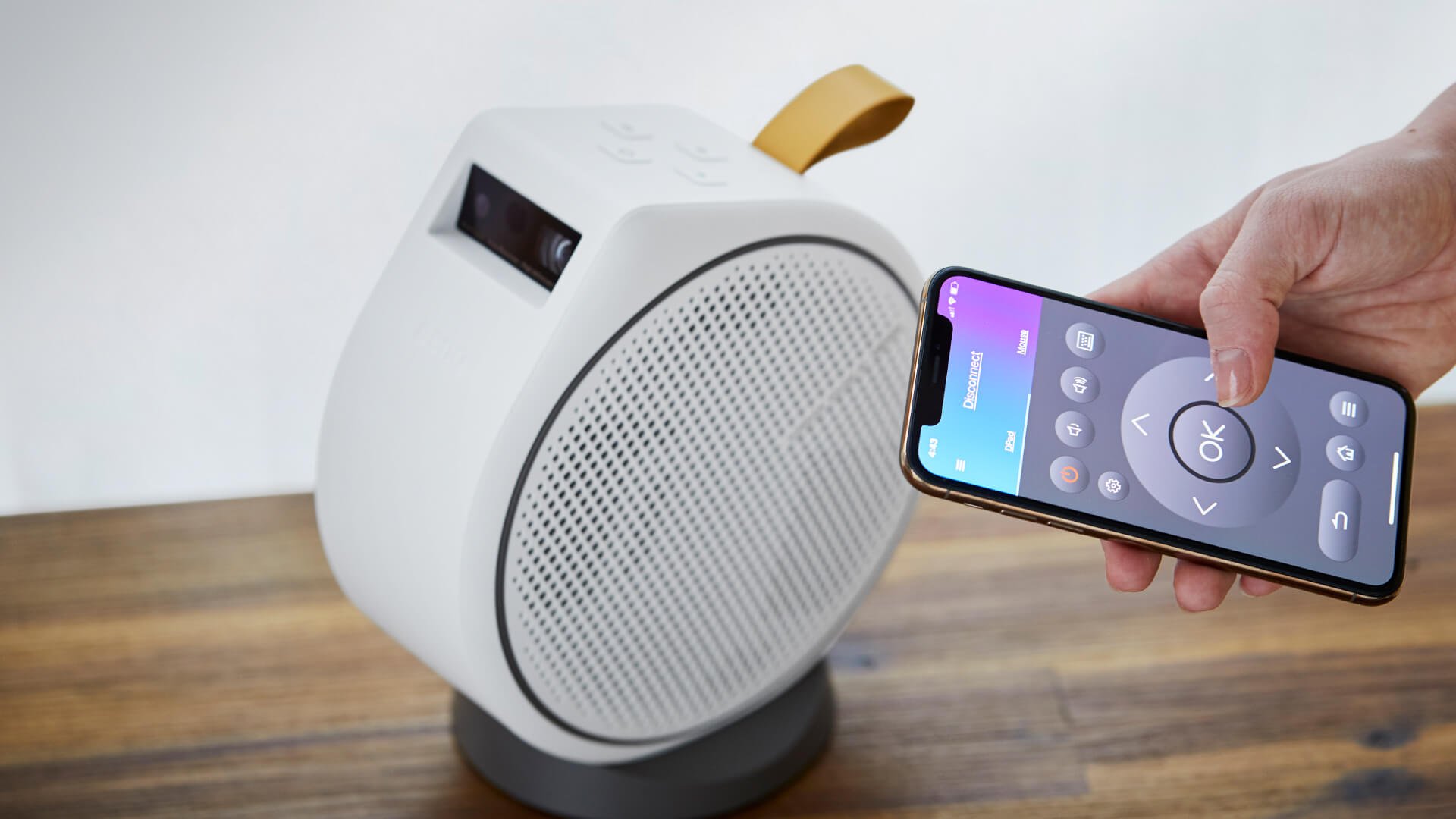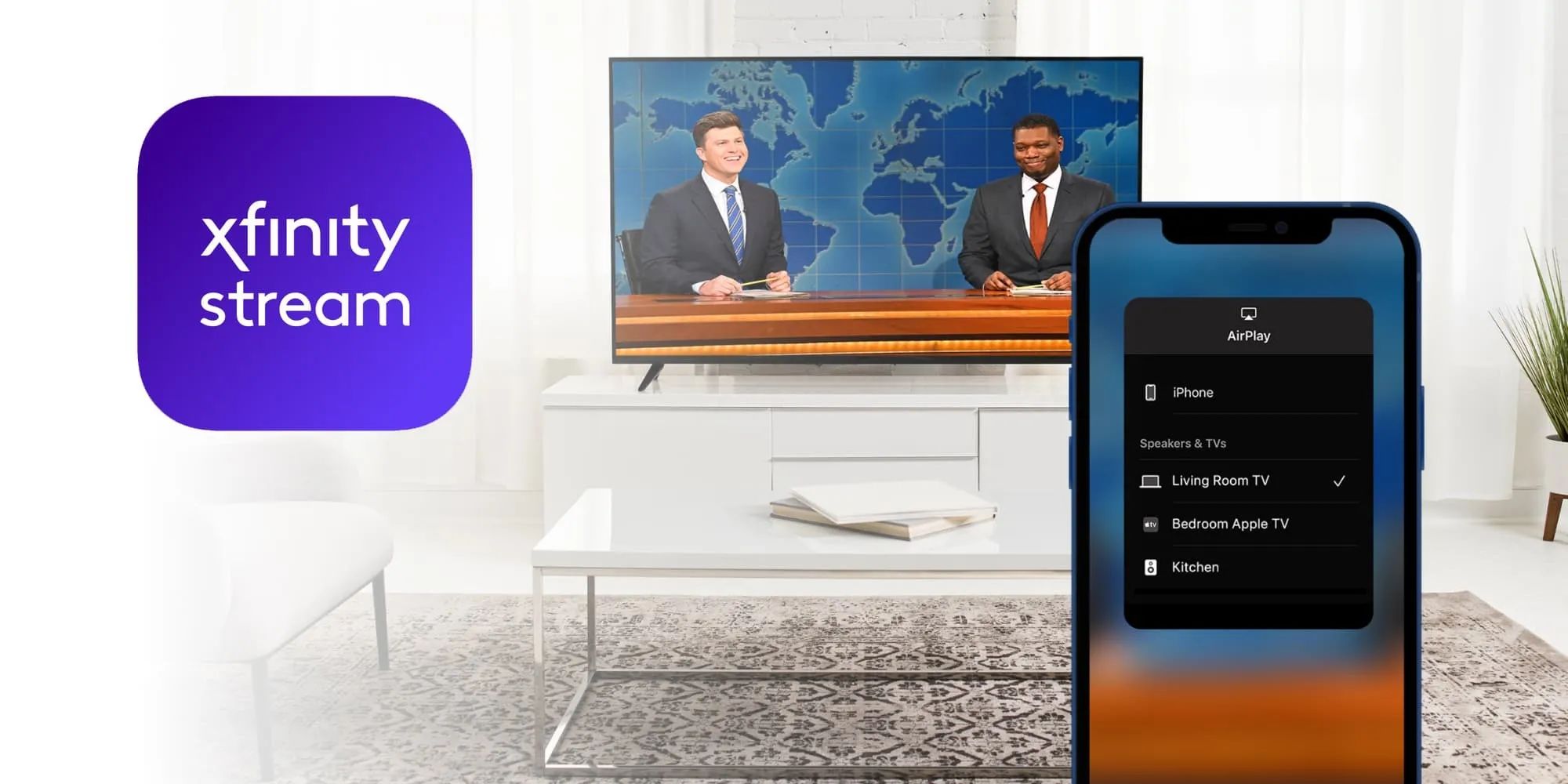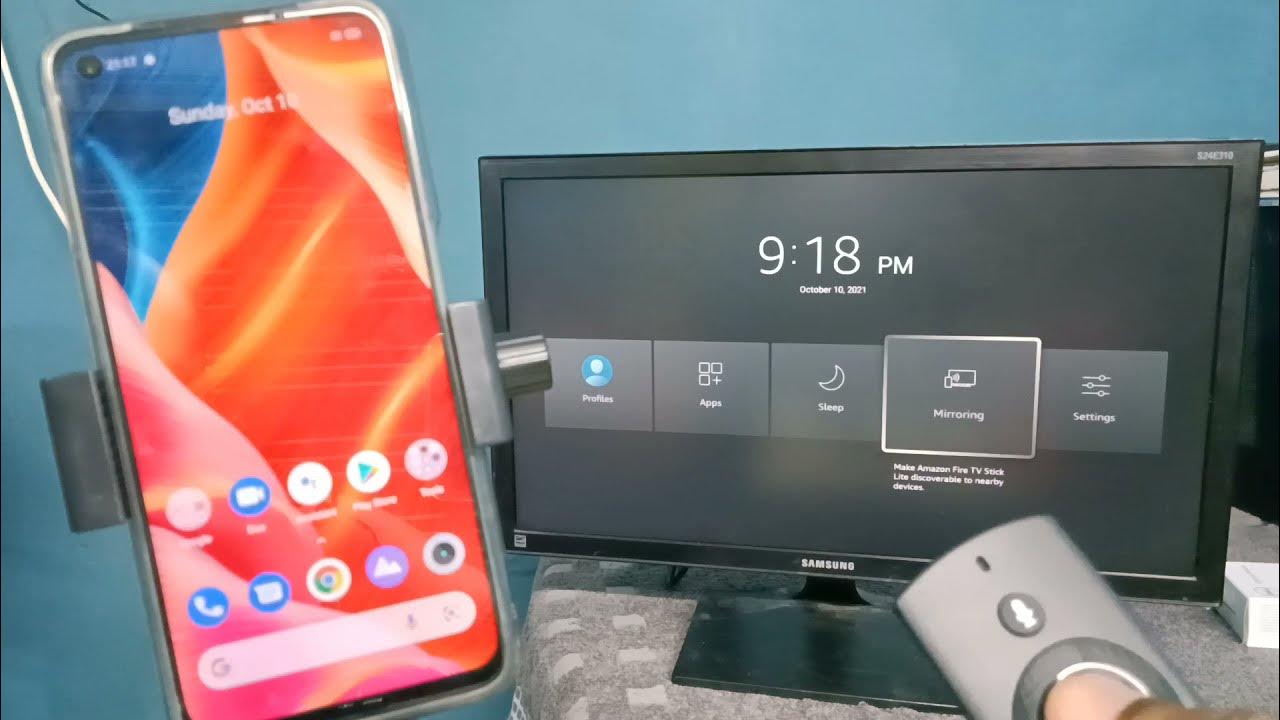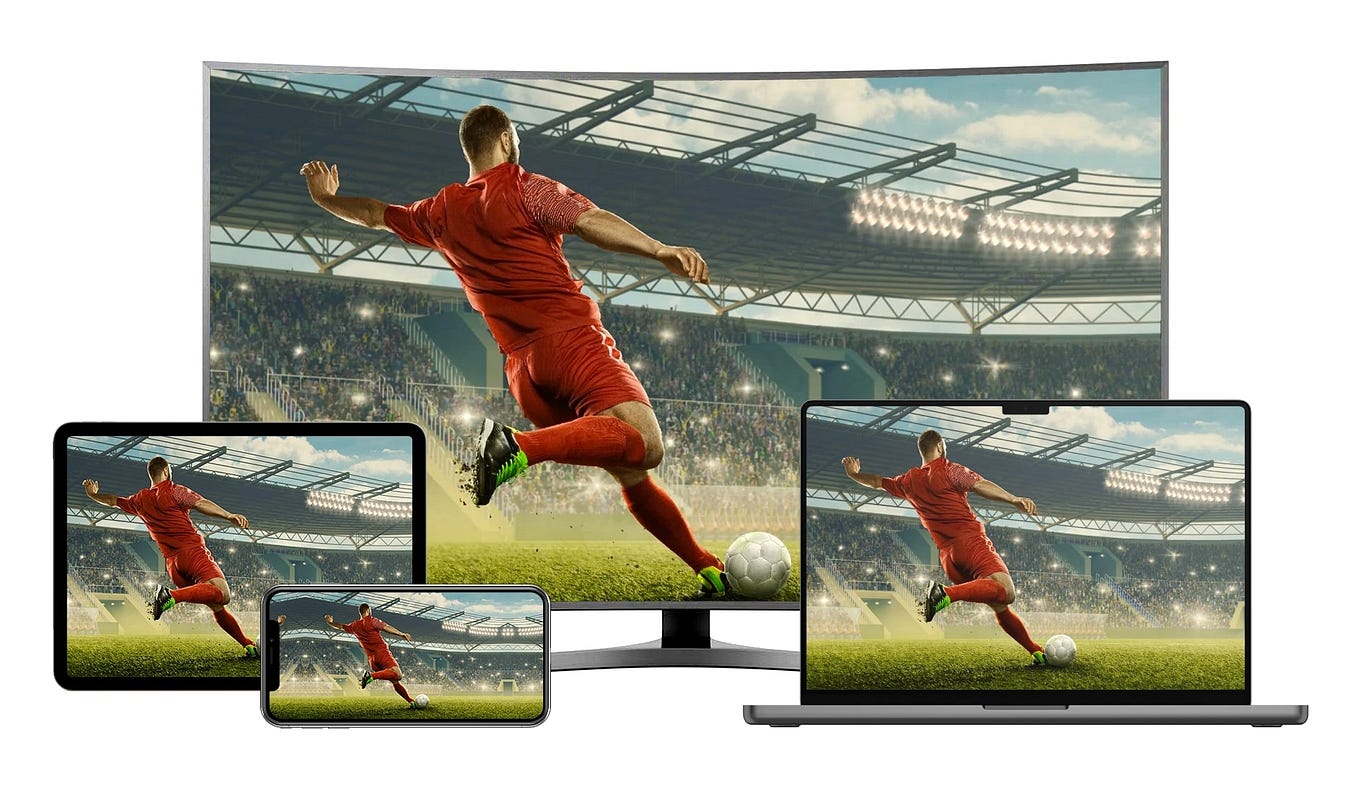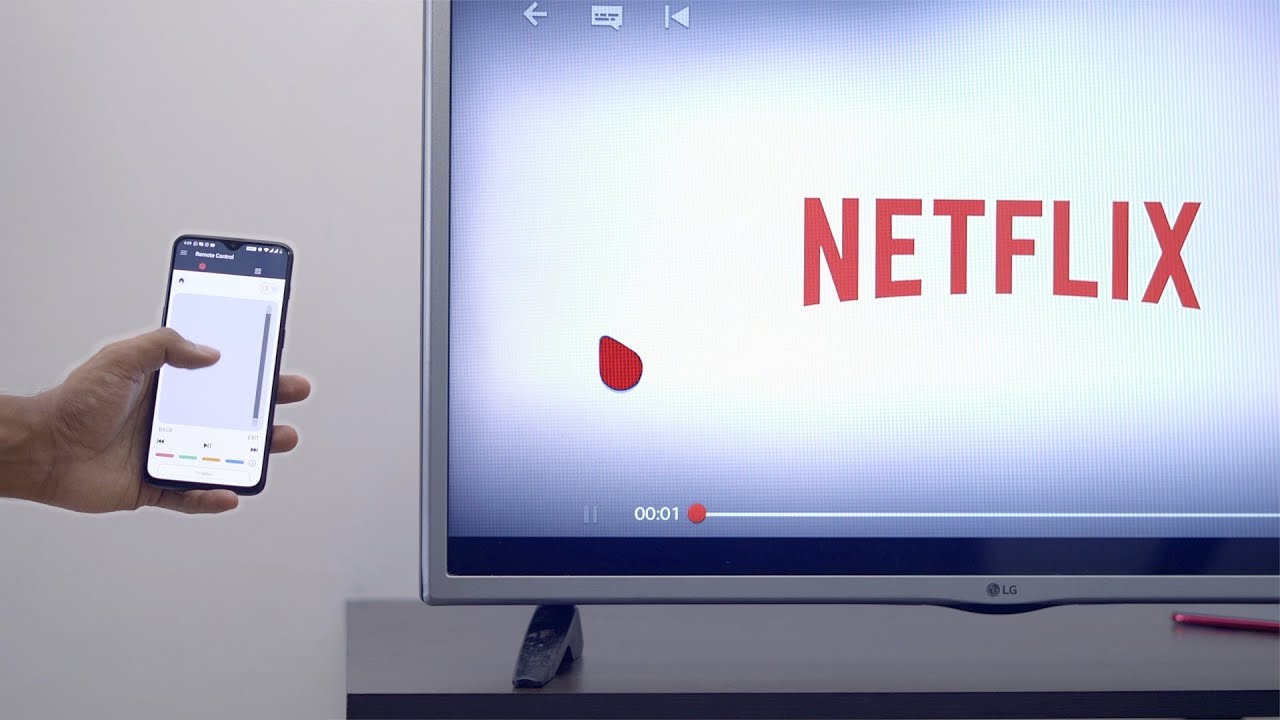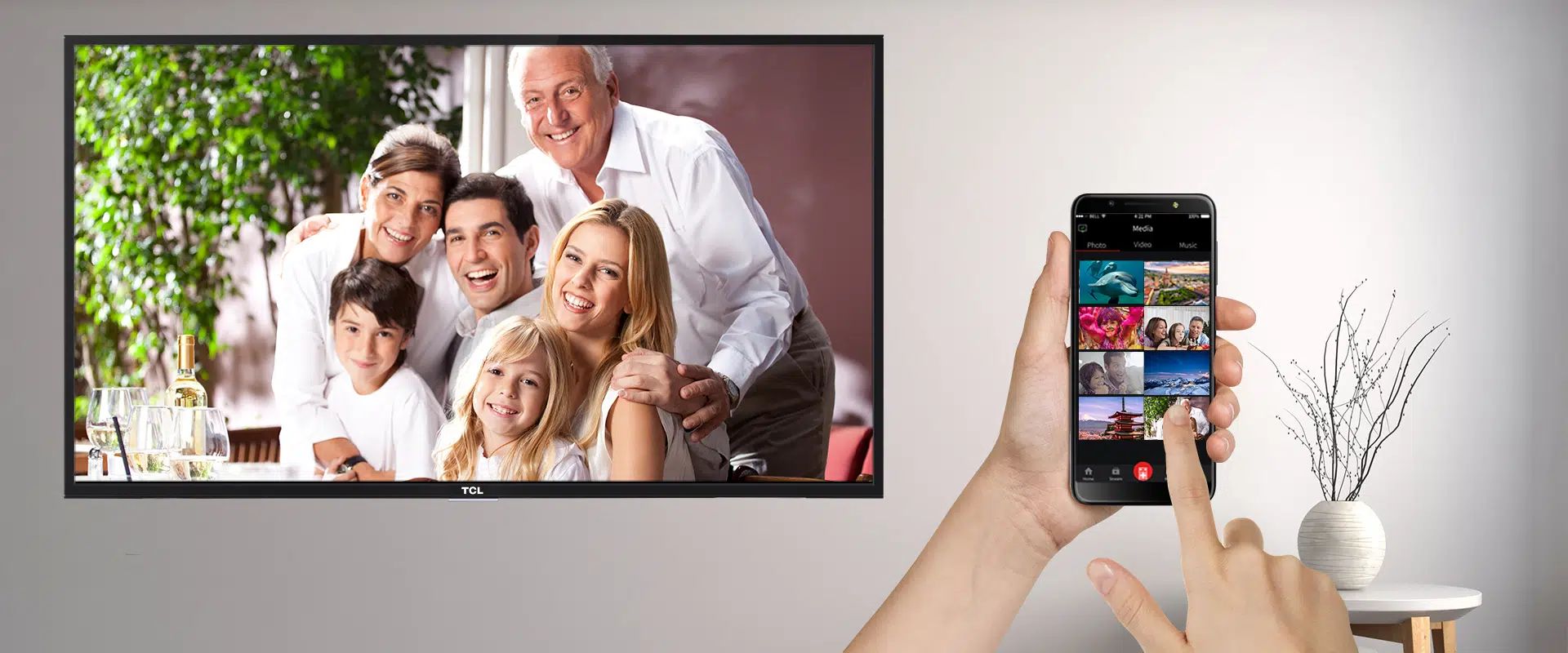Introduction
Welcome to the world of casting! In this digital age, the ability to seamlessly connect your phone to your TV has revolutionized the way we consume content. Whether it's sharing photos and videos with friends and family, streaming your favorite shows and movies, or even mirroring your phone's screen for presentations, casting provides a convenient and immersive viewing experience.
Casting allows you to wirelessly display the contents of your smartphone or tablet on a larger screen, such as a television or monitor. This technology has become increasingly popular due to its simplicity and versatility, offering a bridge between the digital realm of your handheld device and the expansive display of your TV.
As we delve into the intricacies of casting, you'll discover the various methods and technologies available to connect your phone to your TV. From the user-friendly interface of Chromecast to the seamless integration of Apple TV and the built-in capabilities of Smart TVs, there's a myriad of options to suit your preferences and devices.
Whether you're a tech enthusiast looking to explore the latest advancements or a casual user seeking a hassle-free way to enjoy multimedia content, understanding the fundamentals of casting is essential. By the end of this guide, you'll be equipped with the knowledge and confidence to effortlessly connect your phone to your TV, unlocking a world of entertainment and connectivity at your fingertips. So, let's embark on this casting journey and unravel the wonders of merging your handheld device with the cinematic experience of your TV screen.
What is Casting?
Casting, in the context of modern technology, refers to the process of wirelessly transmitting or mirroring the screen of a smartphone, tablet, or computer onto a larger display, typically a television. This enables users to share and enjoy digital content from their handheld devices on a bigger screen, creating a more immersive and engaging viewing experience.
At its core, casting involves the seamless transmission of audio, video, and images from a mobile device to a TV, allowing users to enjoy a wide range of multimedia content in a more communal and visually impactful setting. This technology has gained widespread popularity due to its convenience, versatility, and the array of features it offers.
One of the key aspects of casting is its ability to transcend the limitations of small screens, providing a more expansive canvas for sharing photos, watching videos, playing games, and even conducting presentations. By leveraging casting technology, users can effortlessly stream their favorite movies and TV shows, showcase vacation photos to family and friends, or even display work-related content in a professional setting.
Furthermore, casting is not limited to specific types of content or devices. It accommodates a variety of platforms and operating systems, allowing users to connect their Android, iOS, or Windows-based devices to compatible TVs and monitors. This cross-platform compatibility enhances the accessibility and appeal of casting, making it a widely embraced feature in today’s digital ecosystem.
As technology continues to evolve, casting has become an integral part of the modern entertainment and communication landscape, offering users a seamless and intuitive way to bridge the gap between their handheld devices and larger screens. The next section will explore the different types of casting methods available, shedding light on the diverse options for connecting your phone to your TV.
Types of Casting
When it comes to casting your phone to a TV, there are several methods and technologies available, each offering unique features and compatibility with different devices. Understanding the various types of casting can help you choose the most suitable option based on your specific needs and preferences.
1. Chromecast: Developed by Google, Chromecast is a popular and user-friendly casting device that plugs into the HDMI port of your TV. It allows you to wirelessly stream content from your smartphone, tablet, or computer to the TV screen. With support for a wide range of apps and services, Chromecast offers seamless integration and a straightforward setup process.
2. Apple TV: Apple’s proprietary streaming device, Apple TV, provides a seamless casting experience for iOS users. It enables wireless mirroring of iPhone, iPad, and Mac screens to the TV, allowing users to enjoy Apple’s ecosystem of apps, games, and media content on a larger display. Apple TV also supports popular streaming services and offers advanced features such as voice control with Siri.
3. Smart TV: Many modern televisions come equipped with built-in casting capabilities, allowing you to connect your smartphone or tablet directly to the TV without the need for additional devices. Smart TVs support wireless casting protocols such as Miracast, AirPlay, and Google Cast, providing a convenient and integrated casting experience.
4. HDMI Cable: While not a wireless solution, using an HDMI cable to connect your phone to the TV remains a reliable and straightforward method of casting. By connecting one end of the cable to your phone and the other end to the TV’s HDMI port, you can mirror your device’s screen and enjoy content on the larger display.
Each type of casting method offers its own set of advantages and considerations, catering to different devices, preferences, and usage scenarios. Whether you prefer the convenience of wireless casting with dedicated devices like Chromecast and Apple TV or the simplicity of using a Smart TV’s built-in casting capabilities, there’s a casting solution to suit your needs.
Now that we’ve explored the different types of casting methods, let’s delve into the myriad benefits of connecting your phone to your TV through casting.
Benefits of Casting Your Phone to TV
Connecting your phone to your TV via casting offers a multitude of benefits, enhancing your entertainment, productivity, and overall multimedia experience. Whether you’re streaming content, sharing memories with loved ones, or delivering presentations, casting provides a seamless and dynamic connection between your handheld device and the expansive display of your television.
1. Enhanced Viewing Experience: Casting allows you to enjoy your favorite movies, TV shows, and videos on a larger screen, creating a more immersive and cinematic experience. Whether it’s streaming content from popular apps or viewing personal videos and photos, casting elevates the visual impact and enjoyment of multimedia content.
2. Convenient Sharing: With casting, sharing photos, videos, and presentations with family, friends, or colleagues becomes effortless. Whether it’s reliving vacation memories, showcasing a slideshow, or collaborating on work-related projects, casting facilitates seamless sharing and collaboration on a larger scale.
3. Wireless Connectivity: By leveraging casting technology, you can eliminate the need for cumbersome cables and connectors, creating a clutter-free and streamlined setup. Wireless connectivity enables you to effortlessly display content from your phone to the TV, enhancing convenience and mobility.
4. Cross-Platform Compatibility: Whether you’re using an Android, iOS, or Windows device, casting accommodates a wide range of platforms, ensuring compatibility with various operating systems and devices. This cross-platform support enhances accessibility and inclusivity, allowing users to connect their preferred devices to the TV.
5. Versatile Usage Scenarios: From entertainment to productivity, casting offers versatility in its applications. Whether you’re streaming music for a gathering, conducting a video conference, or playing mobile games on a larger screen, casting adapts to diverse usage scenarios, enriching your digital experiences.
6. Seamless Integration: With dedicated casting devices such as Chromecast and Apple TV, the integration with popular apps and services enhances the overall casting experience. These devices offer intuitive interfaces, support for a wide range of streaming platforms, and additional features that elevate the seamless integration between your phone and TV.
By harnessing the benefits of casting, you can transform the way you engage with digital content, share moments with others, and harness the potential of your handheld device on a grander scale. Now, let’s explore the methods of connecting your phone to your TV through casting, starting with the popular choice of using Chromecast.
How to Connect Your Phone to TV
Connecting your phone to your TV through casting involves various methods and technologies, each offering unique features and compatibility with different devices. Whether you prefer the seamless integration of dedicated casting devices or the convenience of built-in casting capabilities, there’s a method suited to your preferences and requirements.
Let’s explore the popular methods of connecting your phone to your TV through casting:
Using Chromecast
Chromecast, developed by Google, offers a straightforward and versatile way to cast content from your phone to your TV. To connect your phone to the TV using Chromecast:
- Plug the Chromecast device into the HDMI port of your TV.
- Download and install the Google Home app on your phone.
- Follow the on-screen instructions in the app to set up the Chromecast and connect it to your Wi-Fi network.
- Once set up, open a supported app on your phone, such as YouTube or Netflix, and tap the Cast button to select your Chromecast device and begin casting.
Using Apple TV
If you’re an iOS user, Apple TV provides seamless casting capabilities for your iPhone, iPad, or Mac. To connect your phone to the TV using Apple TV:
- Ensure your Apple TV and iPhone are connected to the same Wi-Fi network.
- Swipe down from the top-right corner of your iPhone to access Control Center.
- Tap “Screen Mirroring” and select your Apple TV from the available devices to start casting your phone’s screen to the TV.
Using Smart TV
Many modern Smart TVs come equipped with built-in casting features, supporting wireless protocols such as Miracast, AirPlay, and Google Cast. To connect your phone to a Smart TV:
- Ensure your phone and Smart TV are connected to the same Wi-Fi network.
- Access the casting or screen mirroring option on your phone and select your Smart TV from the available devices to initiate the connection.
Using HDMI Cable
While not a wireless solution, using an HDMI cable to connect your phone to the TV remains a reliable method of casting. Simply connect one end of the HDMI cable to your phone and the other end to the TV’s HDMI port to mirror your device’s screen.
By utilizing these methods, you can seamlessly connect your phone to your TV, unlocking a world of entertainment, productivity, and connectivity. Now, let’s delve into some tips for optimizing your casting experience and maximizing the potential of your phone-TV connection.
Using Chromecast
Chromecast, a popular casting device developed by Google, offers a seamless and user-friendly way to connect your phone to your TV. Whether you’re streaming videos, sharing photos, or mirroring your device’s screen, Chromecast provides a versatile and intuitive casting experience.
To utilize Chromecast for casting content from your phone to your TV, follow these simple steps:
- Setup: Plug the Chromecast device into the HDMI port of your TV. Ensure that your TV and Chromecast are connected to the same Wi-Fi network.
- App Installation: Download and install the Google Home app on your smartphone or tablet from the respective app store.
- Device Connection: Open the Google Home app and follow the on-screen instructions to set up the Chromecast and connect it to your Wi-Fi network.
- Casting Content: Once the setup is complete, open a supported app on your phone, such as YouTube, Netflix, or Spotify. Look for the Cast button within the app and tap it to select your Chromecast device. You can then start casting your desired content to the TV.
Chromecast supports a wide range of apps and services, allowing you to stream music, videos, and more from your phone to the TV with just a few taps. Additionally, the integration of Chromecast with popular streaming platforms enhances the overall casting experience, offering a seamless and immersive way to enjoy multimedia content on a larger screen.
Furthermore, Chromecast offers the option to mirror your device’s screen, enabling you to showcase presentations, browse the web, or share content from various apps on the TV. This versatility makes Chromecast a valuable tool for both entertainment and productivity, providing a dynamic connection between your phone and the TV.
With its user-friendly setup, broad app support, and screen mirroring capabilities, Chromecast has become a go-to choice for many users seeking a convenient and feature-rich casting solution. Whether you’re hosting a movie night, sharing memories with friends and family, or delivering a captivating presentation, Chromecast offers a seamless bridge between your phone and the TV, enhancing your digital experiences.
Using Apple TV
Apple TV provides a seamless and intuitive way to connect your iPhone, iPad, or Mac to your TV, offering a versatile casting experience within the Apple ecosystem. Whether you’re streaming content, sharing presentations, or mirroring your device’s screen, Apple TV facilitates a dynamic and immersive connection between your handheld device and the larger display of your television.
To utilize Apple TV for casting content from your phone to your TV, follow these simple steps:
- Network Connection: Ensure that your Apple TV and your iPhone, iPad, or Mac are connected to the same Wi-Fi network.
- Screen Mirroring: On your iPhone, swipe down from the top-right corner to access Control Center. For iPad, swipe down from the top-right corner on iPad with Face ID, or swipe up from the bottom edge on iPad with a Home button. Tap “Screen Mirroring” and select your Apple TV from the available devices to start casting your phone’s screen to the TV.
Apple TV offers seamless integration with the Apple ecosystem, allowing users to enjoy a wide range of apps, games, and media content on the TV screen. The device supports popular streaming services and provides advanced features such as voice control with Siri, enhancing the overall casting experience within the Apple environment.
Furthermore, Apple TV enables users to share photos, videos, and presentations from their iOS or macOS devices with ease, creating a communal and visually impactful viewing experience. Whether it’s reliving cherished memories, showcasing creative projects, or engaging in collaborative activities, Apple TV facilitates seamless sharing and connectivity on a larger scale.
With its user-friendly interface, broad app support, and seamless integration with the Apple ecosystem, Apple TV has become a favored choice for iOS and macOS users seeking a comprehensive and feature-rich casting solution. Whether you’re enjoying multimedia content, collaborating on projects, or exploring the capabilities of your Apple devices on a grander scale, Apple TV offers a compelling bridge between your phone and the TV, enhancing your digital experiences.
Using Smart TV
Many modern Smart TVs come equipped with built-in casting features, allowing you to connect your smartphone or tablet directly to the TV without the need for additional casting devices. This built-in functionality supports wireless casting protocols such as Miracast, AirPlay, and Google Cast, providing a convenient and integrated casting experience.
To connect your phone to a Smart TV using its built-in casting capabilities, follow these simple steps:
- Network Connection: Ensure that your phone and Smart TV are connected to the same Wi-Fi network.
- Casting Setup: Access the casting or screen mirroring option on your phone. The specific method may vary depending on your device’s operating system, but you can typically find this option in the settings or quick access menu.
- Device Selection: Select your Smart TV from the available devices to initiate the connection. Once connected, your phone’s screen will be mirrored on the TV, allowing you to share and enjoy content on the larger display.
Smart TVs offer a seamless and integrated casting experience, enabling users to stream videos, share photos, and display presentations directly from their handheld devices. This built-in functionality eliminates the need for additional casting devices, providing a hassle-free and streamlined solution for connecting your phone to the TV.
Furthermore, Smart TVs support a wide range of apps and services, allowing users to access popular streaming platforms, music services, and more directly from the TV interface. The built-in casting capabilities enhance the accessibility and versatility of Smart TVs, providing a comprehensive solution for enjoying multimedia content on a larger screen.
With their user-friendly interface, seamless integration, and support for diverse casting protocols, Smart TVs have become a popular choice for users seeking a convenient and all-in-one casting solution. Whether you’re streaming your favorite shows, sharing memorable moments, or engaging in collaborative activities, Smart TVs offer a compelling bridge between your phone and the TV, enriching your digital experiences.
Using HDMI Cable
While wireless casting solutions offer convenience and flexibility, using an HDMI cable remains a reliable and straightforward method for connecting your phone to your TV. By utilizing an HDMI cable, you can mirror your device’s screen and enjoy multimedia content on the larger display of your television.
To connect your phone to the TV using an HDMI cable, follow these simple steps:
- Device Compatibility: Ensure that your phone supports video output via HDMI. Some devices may require specific adapters or accessories to enable HDMI connectivity.
- Cable Connection: Connect one end of the HDMI cable to your phone’s video output port. If your phone does not have a dedicated video output port, you may need an appropriate adapter or accessory to facilitate the connection.
- TV Connection: Connect the other end of the HDMI cable to the HDMI port on your TV. Note the HDMI port number for reference, as modern TVs often have multiple HDMI inputs.
- Input Selection: Using your TV’s remote or control panel, select the corresponding HDMI input that you connected the cable to. This action ensures that the TV receives the signal from your phone.
Once the connection is established, your phone’s screen will be mirrored on the TV, allowing you to enjoy videos, photos, and other multimedia content on the larger display. This method is particularly useful for scenarios where wireless connectivity may not be available or for devices that do not support wireless casting protocols.
Using an HDMI cable provides a reliable and direct connection between your phone and the TV, offering a simple and effective way to share content and enjoy a more immersive viewing experience. Whether you’re watching movies, showcasing presentations, or playing games, the HDMI cable method remains a versatile and accessible solution for connecting your phone to the TV.
Tips for a Better Casting Experience
Optimizing your casting experience can enhance the quality and convenience of connecting your phone to your TV, ensuring a seamless and enjoyable multimedia experience. Whether you’re streaming content, sharing presentations, or mirroring your device’s screen, these tips can help you make the most of your casting setup.
- Stable Network Connection: Ensure that both your phone and the casting device or TV are connected to a stable Wi-Fi network. A strong and reliable network connection is essential for smooth and uninterrupted casting.
- Update Firmware and Apps: Keep your casting devices, such as Chromecast, Apple TV, or Smart TV, updated with the latest firmware and software versions. Additionally, ensure that the apps you use for casting are updated to the latest versions for optimal performance.
- Optimize Screen Resolution: Adjust the screen resolution and aspect ratio settings on your phone to match the TV’s display capabilities. This ensures that the content is presented in the best possible quality on the larger screen.
- Minimize Signal Interference: Reduce potential signal interference by positioning your Wi-Fi router away from electronic devices that may disrupt the casting connection. Additionally, avoid physical obstructions between the casting devices and the router.
- Explore Casting Features: Familiarize yourself with the advanced casting features offered by your casting device or Smart TV. This may include screen mirroring settings, audio output options, and additional functionalities that can enhance your casting experience.
- Use Casting-Compatible Apps: Utilize apps that are optimized for casting, providing a seamless and immersive experience when streaming content from your phone to the TV. Many popular streaming services and media apps offer native casting support.
- Consider Audio Output: If you’re casting videos or music, consider the audio output options available. You can opt to play audio through the TV’s speakers, a soundbar, or a home audio system for an enhanced audio experience.
- Customize Display Settings: Explore the display settings on your casting device or Smart TV to customize the viewing experience. This may include adjusting picture modes, color settings, and display preferences to suit your viewing environment.
- Ensure Device Compatibility: Verify the compatibility of your phone with the casting method you intend to use. Some casting protocols may be specific to certain device models or operating systems.
- Power Management: Ensure that your phone and casting devices are adequately charged or connected to power sources to avoid interruptions during casting sessions.
By implementing these tips, you can optimize your casting experience, ensuring seamless connectivity, high-quality content delivery, and an immersive viewing experience when connecting your phone to your TV. Now, armed with these insights, you’re ready to embark on a seamless casting journey, unlocking the full potential of merging your handheld device with the cinematic experience of your TV screen.
Conclusion
As we conclude our exploration of connecting your phone to your TV through casting, it’s evident that this technology has transformed the way we consume, share, and enjoy multimedia content. Whether you opt for the user-friendly interface of Chromecast, the seamless integration of Apple TV, the built-in capabilities of Smart TVs, or the reliability of an HDMI cable, the options for casting are diverse and adaptable to various preferences and devices.
By understanding the fundamentals of casting and the diverse methods available, you can effortlessly bridge the digital realm of your handheld device with the expansive display of your TV, unlocking a world of entertainment, productivity, and connectivity at your fingertips. Whether it’s streaming your favorite movies, sharing cherished memories with loved ones, or delivering captivating presentations, casting offers a dynamic and immersive connection that enriches your digital experiences.
Furthermore, the tips provided for optimizing your casting experience can enhance the quality and convenience of connecting your phone to your TV, ensuring a seamless and enjoyable multimedia experience. From ensuring a stable network connection to exploring advanced casting features and customizing display settings, these insights empower you to make the most of your casting setup.
As technology continues to evolve, casting remains an integral part of the modern entertainment and communication landscape, offering a seamless and intuitive way to bridge the gap between handheld devices and larger screens. Whether you’re a tech enthusiast exploring the latest advancements or a casual user seeking a hassle-free way to enjoy multimedia content, the possibilities of casting are within reach.
So, as you embark on your casting journey, armed with the knowledge and confidence to effortlessly connect your phone to your TV, may your digital experiences be enriched, your moments shared, and your multimedia content enjoyed in all its grandeur. The world of casting beckons, inviting you to merge your handheld device with the cinematic experience of your TV screen, creating a seamless and immersive connection that transcends the boundaries of traditional viewing.







